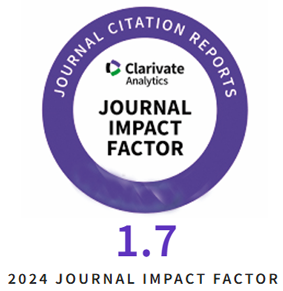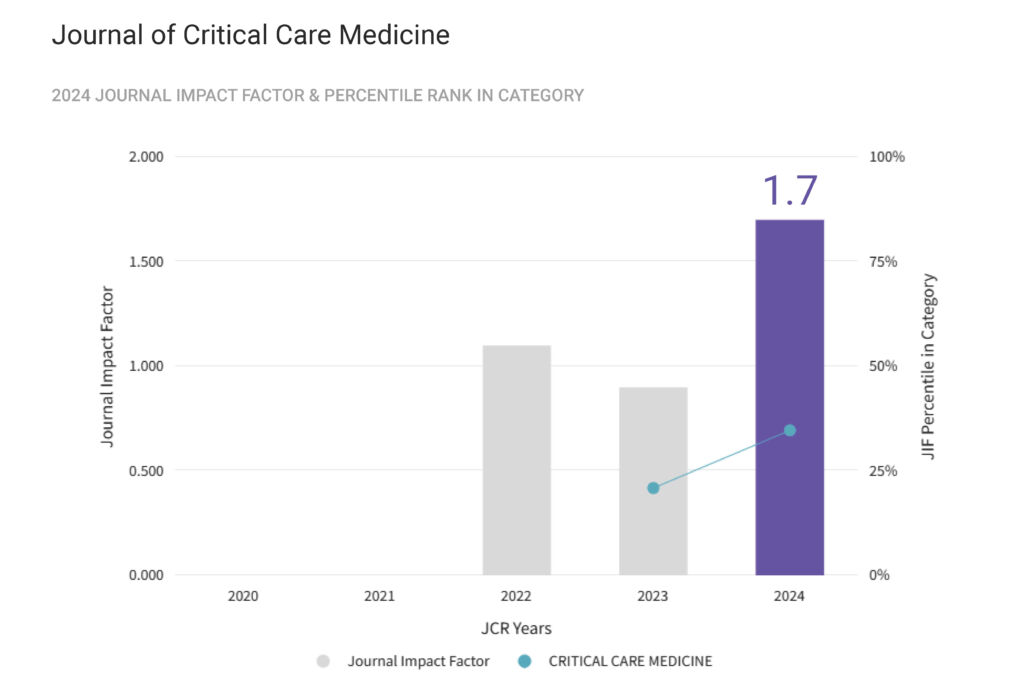Objective: To analyze the frequency and types of postoperative complications and risk factors for in-hospital mortality.
Methods: This retrospective longitudinal study included adult patients who underwent surgical procedures and were admitted to the intensive care unit of a university hospital between March and July 2022. Study variables included sociodemographic, clinical, and epidemiological data; postoperative complications and hospital outcomes. The significance level was set at 5%.
Results: We analyzed 202 patients, with a median age of 67 years (IQR 55–74) and a predominance of males (62.4%). Inhospital mortality was 26.2%. Postoperative complications occurred in 84.7% of patients, with cardiovascular (53.4%), infectious (49.5%), and gastrointestinal (48.5%) complications being the most frequent. Early postoperative feeding was initiated in 34.2% of cases, and a delay was associated with a higher risk of complications. Nausea and vomiting prophylaxis were administered to most patients—intraoperatively in 61.9% and postoperatively in 96%. In logistic regression analysis, female sex, urgent surgery, and higher SAPS 3 scores were identified as independent risk factors for death.
Conclusions: Postoperative complications were highly prevalent and associated with an increased risk of death. Intraoperative nausea and vomiting prophylaxis and early postoperative feeding were associated with a lower frequency of complications. Identified risk factors for mortality included female sex, higher SAPS 3 scores, and urgent surgeries.
Tag Archives: in-hospital mortality
Comparative analysis of outcomes between anemic and non-anemic critically ill elderly patients in a geriatric ICU in Egypt: A focused study
Background: Numbers of elderly patients who are being admitted to the intensive care unit (ICU) are increasing; Among ICU patients, elderly patients represent a particular subgroup, with a proportion of up to 50% for patients aged 65 years and over, and on average about 35% of admissions for patients older than 70–75 years. Also, those aged 80 years and older represent around 15% of total ICU population. In Egypt, a study conducted in seven regions found that geriatric patients represent around 48.5% of total ICU admission. Elderly individuals are more susceptible to anemia due to multiple comorbidities and age related changes. Anemia is a common problem among critically ill elderly patients with serious consequences. It is recognized as an independent risk factor for increased mortality and morbidity. In fact, anemia is the most prevalent hematologic disorder in the ICU. The prevalence of anemia among critically ill patients admitted to the ICU ranges from 60 to 66%. Approximately 60% of critically ill patients are anemic at admission, and an additional 40–50% develop anemia during their ICU stay. The condition is particularly common among older patients. Low hemoglobin (Hb) concentrations are associated with prolonged ICU and hospital stays , as well as increased mortality rates. Therefore, anemia is consequently a significant public health issue from the medical and economic perspectives. Aim: To compare outcomes between anemic and non- anemic critically ill elderly patients admitted to the Geriatric ICU at Ahmed Shawky geriatric Hospital, Ain Shams University hospitals.
Subjects and methods: A Prospective cohort study was conducted on two hundred sixteen elderly patients of both sexes aged 60 years old or older. It was carried out in the geriatric ICU at Ahmed Shawky geriatric Hospital, Ain Shams University Hospitals. Data collection included participants demographics, medical history, full labs assessment and anemia evaluation based on hemoglobin level, Severity of illness was assessed by validated scoring systems, including the Sequential organ failure assessment (SOFA score) on the first day of admission, as well as Acute physiology and chronic Health Evaluation (APACHE II, APACHE IV). Additionally, the Mortality Probability Model Score (MPM0-III) was applied at first day of admission, 48hours and 72 hours following ICU admission. Anemia management strategies were documented, including the use of blood transfusions, iron therapy and other supportive treatments. Clinical outcomes assessed included ICU length of stay, Site of discharge, in- hospital Mortality and the incidence of Hospital acquired infections.
Results: On admission 172(79.6%) of studied subjects were anemic, (90)41.7% had mild anemia, 56(25.9%) had moderate anemia and 26(12%) had severe anemia. Anemic patients showed significantly higher SOFA, MPM 24hrs, MPM 48hrs, MPM 72hrs, APACHE4, SAPSIII, extended hospital stays, and increased rates of hospital acquired infections(P<0.05). Predicators of mortality included the severity of anemia, the need for mechanical ventilation, and thrombocytopenia (P<0.001). However, anemia on admission to ICU was not a direct predictor of in- hospital mortality. Regarding management of anemia: seventy three (33.9%) of the anemic subjects received blood transfusion. Fourteen (6.5%) received either enteral or parental iron therapy, 20(9.3%) of studied subjects were given erythropoietin, 3(1.4%) of them were given vitamin B12 and folic acid.
Conclusion: On admission, 79.6% of critically ill elderly patients had anemia. The presence of anemia in this population was associated with prolonged ICU stays, increased in-hospital mortality and a higher risk of hospital acquired infections.
The Gender Gap in Aortic Dissection:
A Prospective Analysis of Risk and Outcomes
Aortic dissection (AD) is a severe cardiovascular condition that could have negative consequences. Our study employed a prospective design and examined preoperative, perioperative, and postoperative data to evaluate the effects of gender on various medical conditions. We looked at how gender affected the results of aortic dissection (AD). In contrast to female patients who had more systemic hypertension (p=0.031), male patients had higher rates of hemopericardium (p=0.003), pulmonary hypertension (p=0.039), and hemopericardium (p=0.003). Dobutamine administration during surgery significantly raised the mortality risk (p=0.015). There were noticeably more women patients (p=0.01) in the 71 to 80 age group. Significant differences in age (p=0.004), eGFR at admission (p=0.009), and eGFR at discharge (p=0.006) were seen, however, there was no association between gender and mortality. In conclusion, our findings highlight that gender may no longer be such an important aspect of aortic dissection disease as we previously thought, and this information could have an important contribution for surgeons as well as for anesthesiologists involved in the management of acute aortic dissection.
Predictors of In-Hospital Mortality after Recovered Out-of-Hospital Cardiac Arrest in Patients with Proven Significant Coronary Artery Disease: A Retrospective study
Introduction: Recovered Out-of-Hospital Cardiac Arrest (rOHCA) population is heterogenous. Few studies focused on outcomes in the rOHCA subgroup with proven significant coronary artery disease (SigCAD). We aimed to characterize this subgroup and study the determinants of in-hospital mortality.
Methods: Retrospective study of consecutive rOHCA patients submitted to coronary angiography. Only patients with SigCAD were included. Results: 60 patients were studied, 85% were male, mean age was 62.6 ± 12.1 years. In-hospital mortality rate was 43.3%. Patients with diabetes and history of stroke were less likely to survive. Significant univariate predictors of in-hospital mortality were further analysed separately, according to whether they were present at hospital admission or developed during hospital evolution. At hospital admission, initial non-shockable rhythm, low-flow time>12min, pH<7.25mmol/L and lactates >4.75mmol/L were the most relevant predictors and therefore included in a score tested by Kaplan-Meyer. Patients who had 0/4 criteria had 100% chance of survival till hospital discharge, 1/4 had 77%, 2/4 had 50%, 3/4 had 25%. Patients with all 4 criteria had 0% survival. During in-hospital evolution, a pH<7.35 at 24h, lactates>2mmol/L at 24h, anoxic brain injury and persistent hemodynamic instability proved significant. Patients who had 0/4 of these in-hospital criteria had 100% chance of survival till hospital discharge, 1/4 had 94%, 2/4 had 47%, 3/4 had 25%. Patients with all 4 criteria had 0% survival. Contrarily, CAD severity and ventricular dysfunction didn’t significantly correlate to the outcome.
Conclusion: Classic prehospital variables retain their value in predicting mortality in the specific group of OHCA with SigCAD. In-hospital evolution variables proved to add value in mortality prediction. Combining these simple variables in risk scores might help refining prognostic prediction in these patients’ subset.










